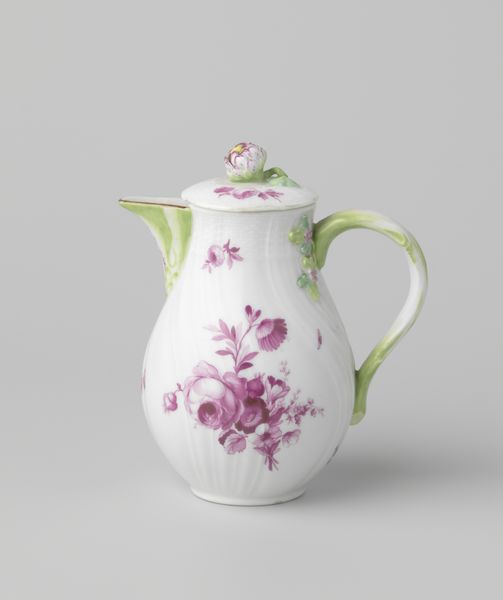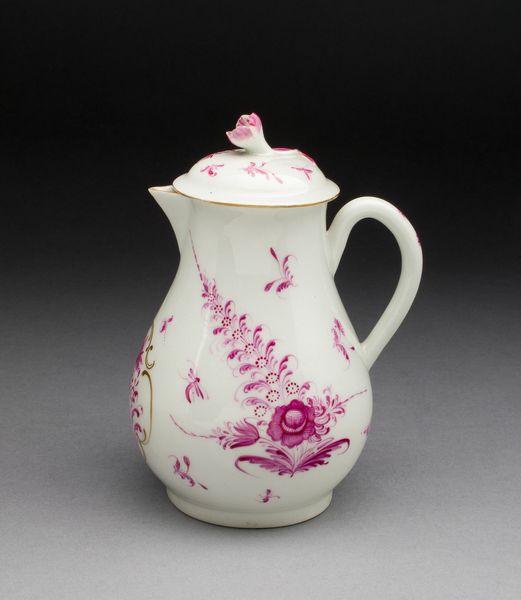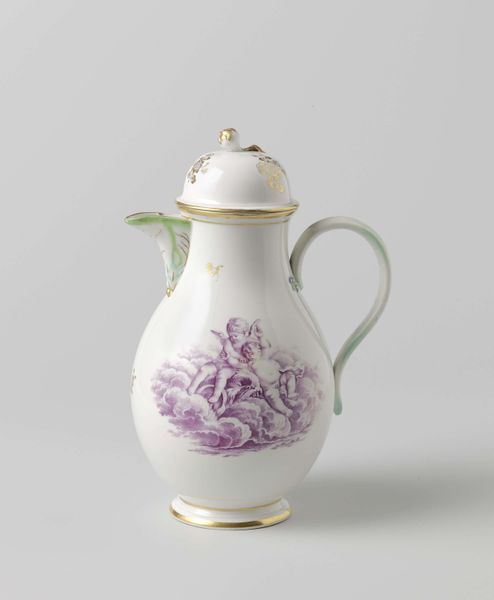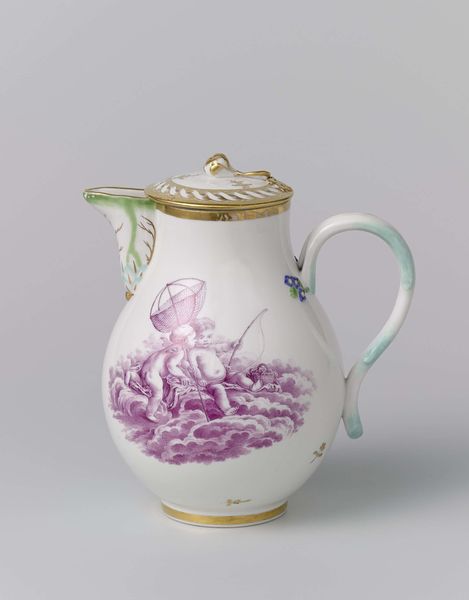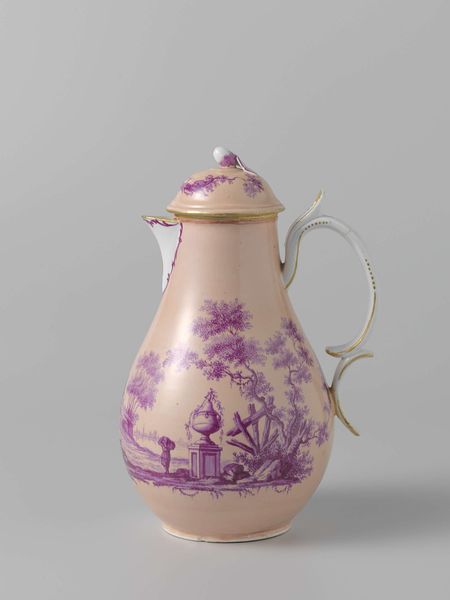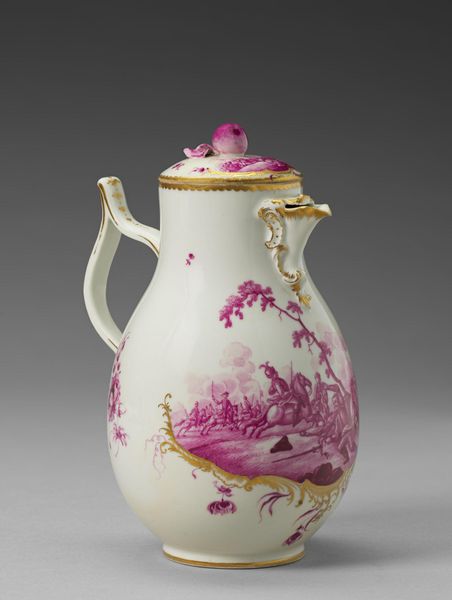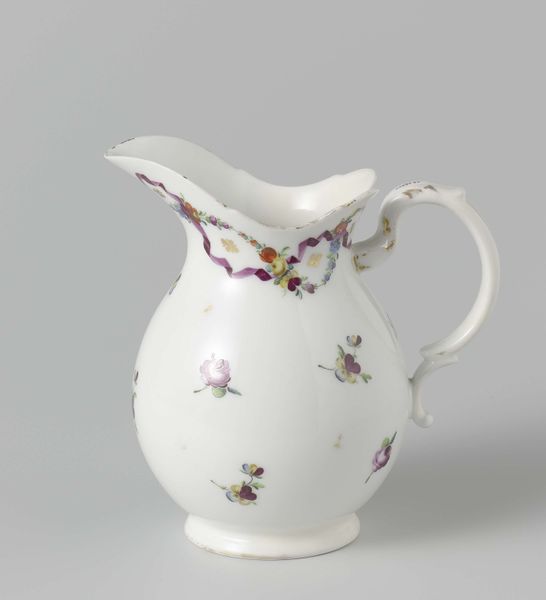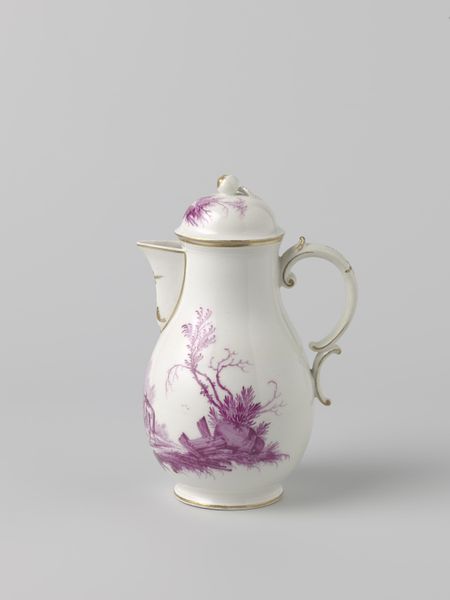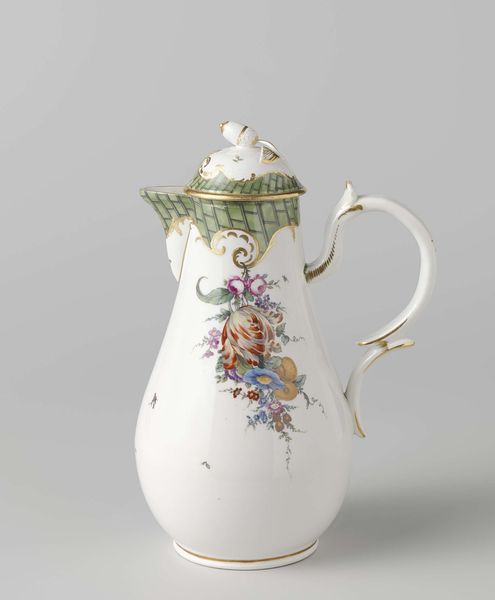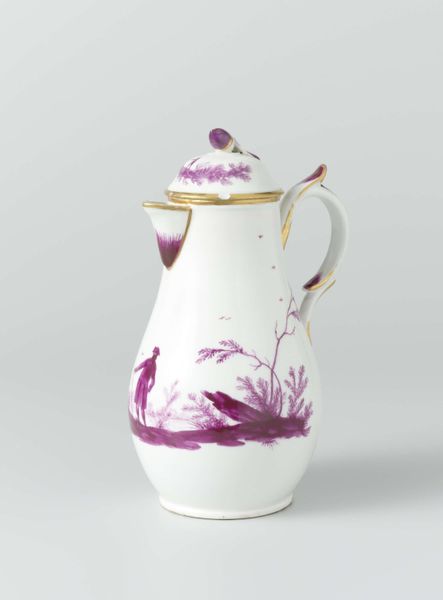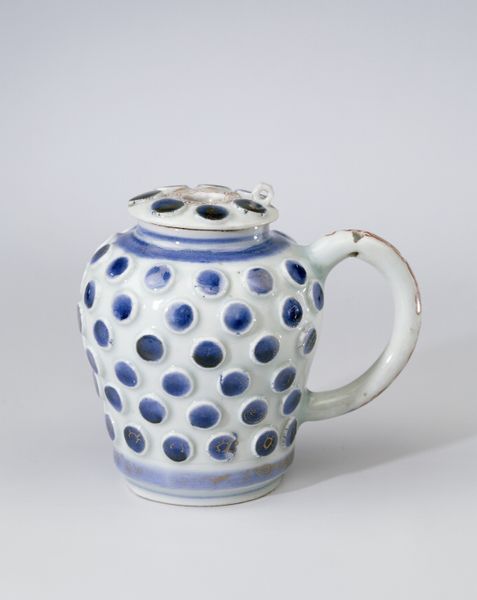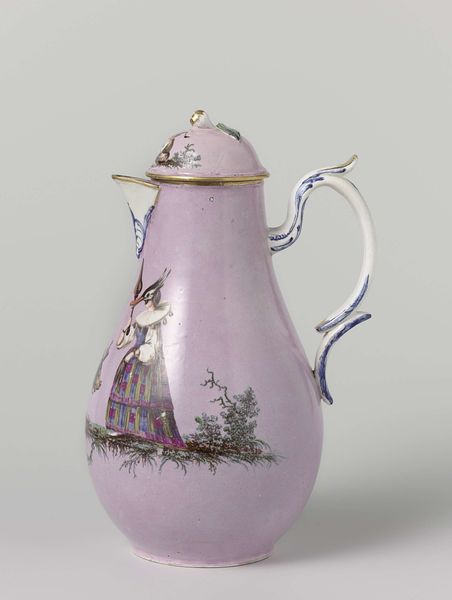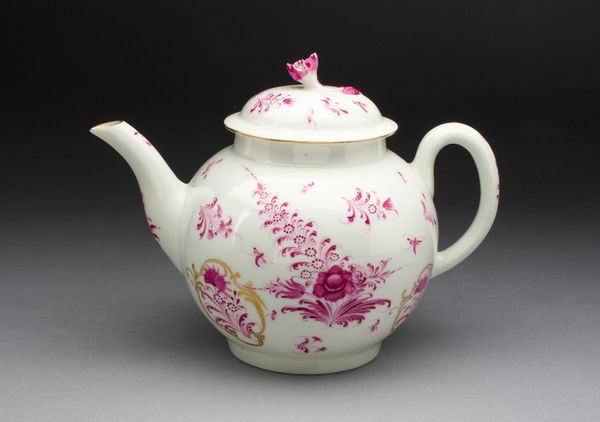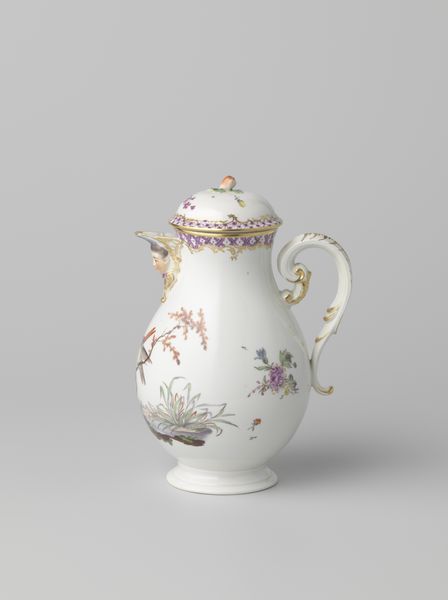
Theepot of koffiekan, polychroombeschilderd met een landschap in een medaillon uitgespaard in een geometrisch patroon c. 1759 - 1771
0:00
0:00
ceramic, porcelain
#
landscape
#
ceramic
#
porcelain
#
geometric
#
rococo
Copyright: Rijks Museum: Open Domain
This is a polychrome-painted coffee pot, possibly from the Weesper porcelain factory. Notice the landscape enclosed in a medallion, set against a geometric backdrop. The landscape motif, encased in a circular frame, hearkens back to classical ideals of Arcadia – an idyllic, pastoral paradise. Yet, observe how this vision is neatly contained, almost imprisoned, within the geometric pattern that dominates the pot. This juxtaposition speaks volumes, doesn't it? Consider how landscapes, from the gardens of ancient Rome to the backgrounds of Renaissance portraits, have always served as powerful symbols of harmony, order, and human control over nature. But here, the rigid grid challenges this notion, suggesting a tension between the wild, untamed world and the structured, civilized one. It reminds me of those medieval tapestries where idealized nature is always framed by human design, echoing a subconscious desire to tame the chaos of the outside world. The pot becomes more than just a vessel; it's a stage for the eternal dance between nature and artifice, freedom and constraint.
Comments
No comments
Be the first to comment and join the conversation on the ultimate creative platform.
